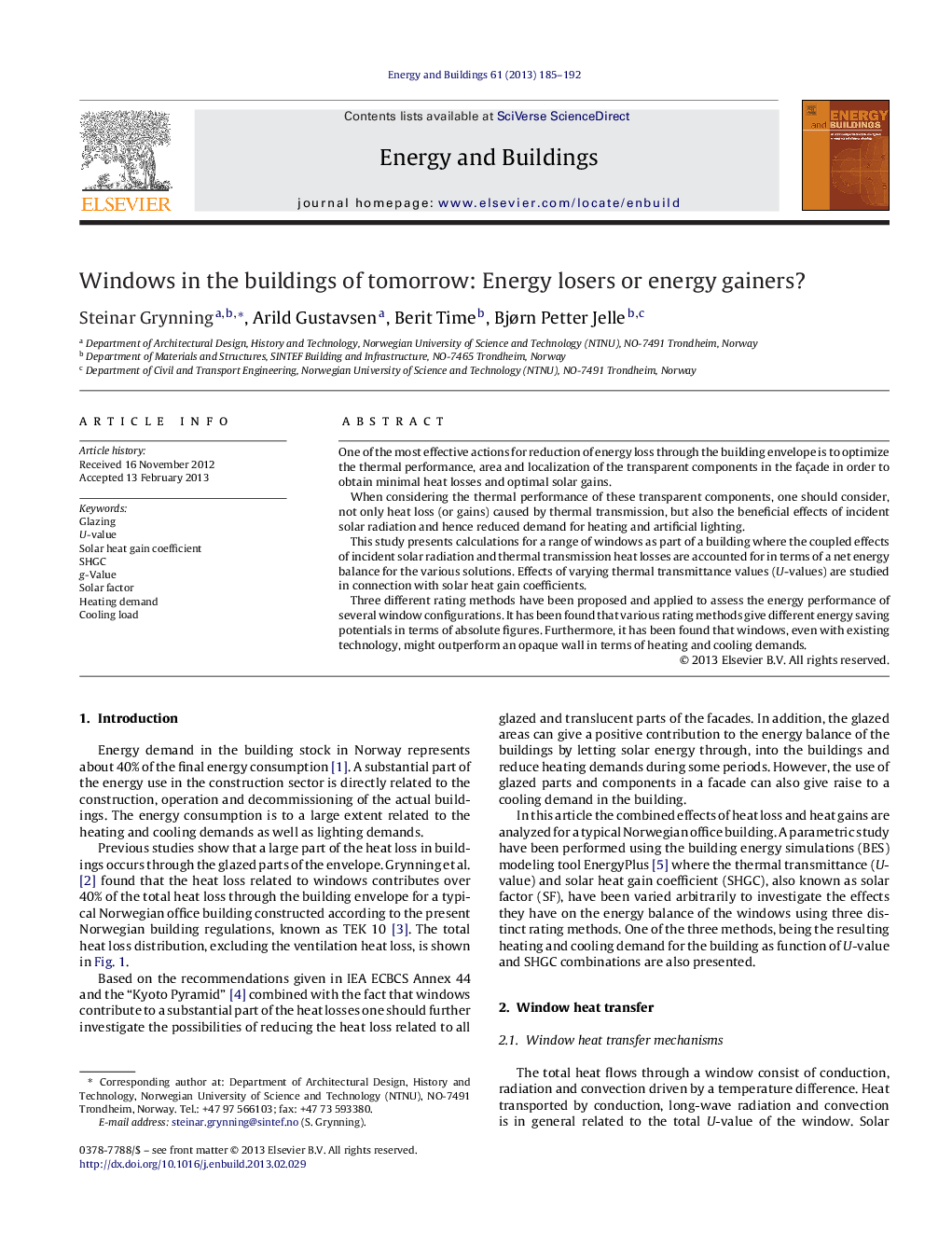| کد مقاله | کد نشریه | سال انتشار | مقاله انگلیسی | نسخه تمام متن |
|---|---|---|---|---|
| 263452 | 504075 | 2013 | 8 صفحه PDF | دانلود رایگان |

One of the most effective actions for reduction of energy loss through the building envelope is to optimize the thermal performance, area and localization of the transparent components in the façade in order to obtain minimal heat losses and optimal solar gains.When considering the thermal performance of these transparent components, one should consider, not only heat loss (or gains) caused by thermal transmission, but also the beneficial effects of incident solar radiation and hence reduced demand for heating and artificial lighting.This study presents calculations for a range of windows as part of a building where the coupled effects of incident solar radiation and thermal transmission heat losses are accounted for in terms of a net energy balance for the various solutions. Effects of varying thermal transmittance values (U-values) are studied in connection with solar heat gain coefficients.Three different rating methods have been proposed and applied to assess the energy performance of several window configurations. It has been found that various rating methods give different energy saving potentials in terms of absolute figures. Furthermore, it has been found that windows, even with existing technology, might outperform an opaque wall in terms of heating and cooling demands.
► Results show that cooling demands are dominating in office buildings, even in cold climates.
► Three methods have been proposed to assess the energy performance of windows in an office building.
► The ISO 18292 method gives an optimum SHGC of 0.4 for windows with U-values lower than 0.8 W/(m2 K).
► The other two methods suggest that low U-values combined with SHGC around 0.4 are desirable.
► Reducing window U-values from 1.2 to 0.8 W/(m2 K), can reduce heating and cooling demands by 5–15%.
Journal: Energy and Buildings - Volume 61, June 2013, Pages 185–192